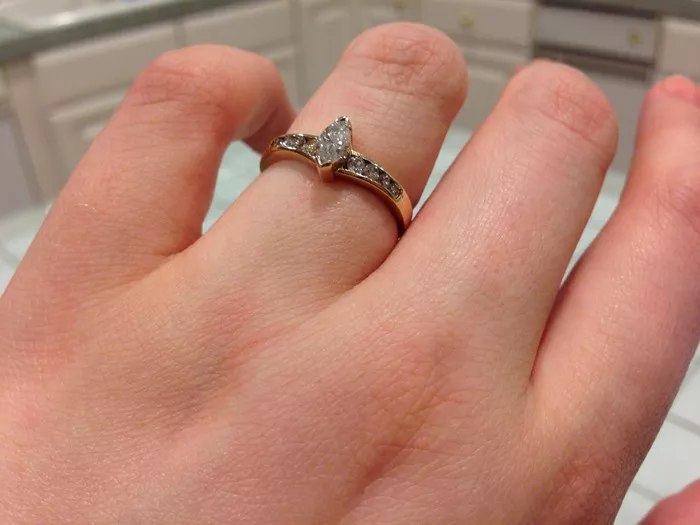Once the unrivaled symbol of enduring love and luxury, diamonds are now facing unprecedented challenges—from geopolitical tariffs to the accelerating popularity of lab-grown alternatives. As global economic uncertainty deepens and trade disputes escalate, the billion-dollar diamond industry is being tested like never before.
At the center of concern is a looming 10% import duty on diamonds entering the United States—home to more than half of global polished diamond demand. With the expiration of a temporary 90-day tariff pause potentially reigniting U.S. President Donald Trump’s aggressive trade agenda, the industry faces a pivotal moment.
“The latest blow” in a perfect storm
Karen Rentmeesters, CEO of the Antwerp World Diamond Centre, described the environment as a “perfect storm” of pressures. “The tariffs are just the latest blow,” she told CNBC. Rentmeesters, who leads an organization that represents over 1,400 companies in the historic Belgian diamond hub, emphasized that the nature of diamond commerce—crossing continents from mines to cutting hubs to retailers—makes it especially vulnerable to trade disruption.
While raw materials like gold and copper have been exempted from tariff lists, diamonds have not. Industry leaders argue that loose diamonds should be treated similarly, calling them a raw material that only gains consumer relevance once embedded in jewelry.
Global slowdown and rising threats from lab-grown diamonds
Compounding the problem is a slowdown in the broader luxury market, especially in China, where post-pandemic optimism has turned into economic caution. But perhaps the most transformative force reshaping the industry is the meteoric rise of lab-grown diamonds (LGDs).
Indistinguishable from natural stones to the naked eye and chemically identical, LGDs are redefining consumer expectations. According to The Knot’s 2025 Real Weddings Study, over half of U.S. engagement rings in the past year featured lab-grown stones. Their affordability—often selling at an 80% discount to natural diamonds—has attracted value-conscious consumers and widened access to the product category.
Pandora, the world’s largest jewelry brand by volume, ceased selling mined diamonds in 2021. “About 18 months ago in the U.S., the volume of lab-grown diamonds in loose stones surpassed that of mined,” said Pandora CEO Alexander Lacik. “This value proposition allows us to offer diamonds to more people.”
As consumer preference shifts and economic pressures mount, natural diamond prices have plunged nearly 60% since their peak in March 2022.
Industry seeks equilibrium—and a message
Despite the disruption, analysts suggest the industry may be approaching a stabilization point. Paul Zimnisky, an independent diamond market analyst, believes price differences are starting to reinforce product segmentation.
“We’re at a point where you can buy a lab-grown diamond three, four, or five carats for just a few thousand dollars. The natural equivalent would cost tens or hundreds of thousands,” said Zimnisky. “This price delta is creating a visible distinction.”
Zimnisky argues that the path forward for the mined diamond sector lies in storytelling and trust. “Diamonds are emotional purchases, not practical ones. People want meaning. They want confidence that the story they’re buying into is real.”
De Beers retreats from lab-grown experiment
One of the most symbolic industry shifts came recently from De Beers. In a notable about-face, the storied company is shuttering its lab-grown jewelry brand, Lightbox. The move signals a renewed focus on natural diamonds amid concerns about LGD price volatility.
“The persistently declining value of lab-grown diamonds in jewelry underscores the growing differentiation between these factory-made products and natural diamonds,” De Beers CEO Al Cook said in a company statement.
The closure is aligned with De Beers’ strategic decision to streamline operations and prioritize high-return ventures. It also comes amid efforts by parent company Anglo American to divest De Beers entirely, signaling a broader repositioning in response to market conditions.
Luxury jewelry remains a bright spot
While overall luxury spending is under pressure, the high-jewelry sector remains resilient, driven by ultra-wealthy clientele less affected by macroeconomic trends. Earlier this month, Richemont—parent of iconic brands like Cartier and Van Cleef & Arpels—reported double-digit revenue growth in its jewelry division, beating analysts’ expectations.
Conclusion: What comes next for natural diamonds?
With tariffs threatening to add costs to an already pressured market and lab-grown diamonds steadily capturing more market share, the mined diamond industry is at a crossroads. The consensus among experts is clear: survival—and success—will depend on messaging, transparency, and emotional connection.
As Zimnisky put it, “If consumers are going to spend significantly more for a natural diamond, they need confidence. That should be the industry’s number one priority.”


